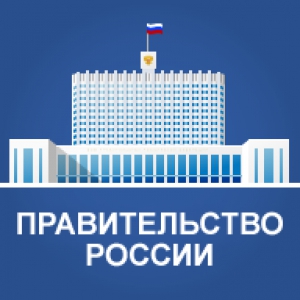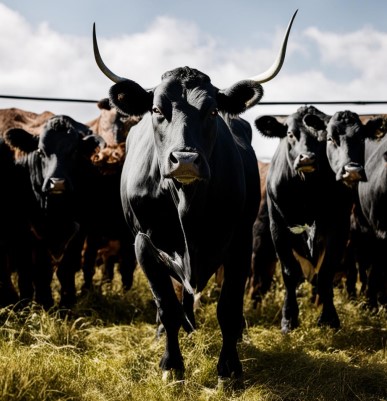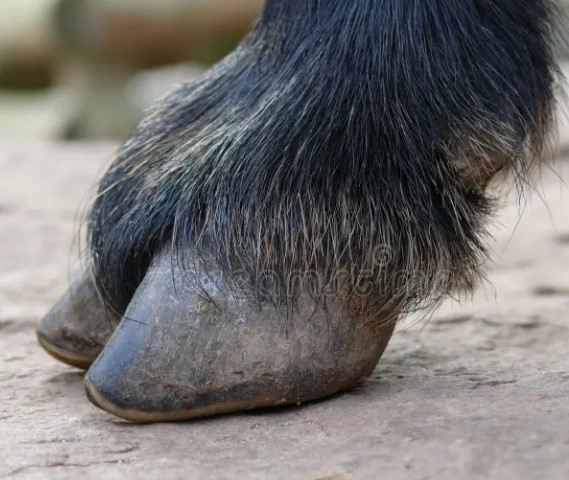The Russian economy's dependence on exports has reached its lowest level since the 1990s

The share of exports of goods and services in Russian GDP in 2023 was at a record low since at least 2011 (starting from this year, GDP is presented using a modified methodology - with the addition of the so-called conditional residential rent and expenditure on weapons systems, which increased nominal GDP by 7–9% compared to the previous method). This follows from Rosstat data analyzed by RBC. If we focus on Rosstat statistics as they are presented (in 1995–2010 according to the old methodology, since 2011 - according to the new one), then the share of exports has become minimal for the entire period of its existence since 1995.
In 2023, exports provided 23.3% of GDP using the income method, compared to 27.7% in 2022, Rosstat said. The average share in 2011–2022 is 27.5%. According to the Bank of RUSSIA, in 2023, exports of goods and services amounted to $465.4 billion - 27% less than in 2022. Of this, the EXPORT of goods accounts for $424 billion. “Indeed, exports in relation to GDP have become a record low in modern history, as evidenced by Rosstat data,” confirms a researcher at the IEP named after. E.T. Gaidar Dmitry Kuznetsov.
Net exports (the difference between exports and imports, which is directly a component of the GDP formula) due to the partial recovery of imports amounted to 4.3% of the GDP structure - the minimum value since 1997, according to Rosstat data. In 2023, imports recovered from 15% in 2022 (a historical low) to 19%, although they were consistently above 20% in 2011–2021.
Why has the share of exports decreased?
As the Central Bank explains, Russian exports of goods in 2023 decreased mainly due to a reduction in the value of supplies of mineral raw materials in the context of a worsening international price environment. According to the International Monetary Fund, in 2023 the average price of oil on the world market (average spot price of Dated Brent, WTI and Dubai Fateh grades) was $80.6 per barrel - 16% lower than in 2022 (however, still a quarter higher than in the pre-pandemic years 2018–2019). In 2023, the share of mineral products (mainly hydrocarbons) in the value of Russian exports decreased to 61 versus 66% in 2022 (but in 2021 it was 56%), follows from the Federal Customs Service data. In 2011–2014, the share of mineral products in Russian exports exceeded 70%. Since 2022, the Federal Customs Service has not disclosed foreign trade indicators by product codes, that is, individual indicators for the export of oil, petroleum products or natural gas are unknown.
In the case of Russia, the export-to-GDP ratio can be very volatile because Russian exports are heavily dependent on hydrocarbons, Kuznetsov says. The reduction in the share of exports in GDP to a record low is due to both normal market changes and sanctions restrictions, says Alexander Firanchuk, senior researcher at RANEPA. Thus, the European Union states that its sanctions cover 61% of imports from Russia to the EU in 2021, or €95 billion. “External restrictions have led to the need to redirect goods to neutral markets and the loss of some exports. The redirection required the provision of discounts, which, although tending to decrease, have not completely disappeared,” Firanchuk points out.
Read PIONERPRODUKT .by Bootstrapping: how and why experienced businessmen become startupers “They degrade and leave”: how companies ruin full-time IT specialists Who are cybersquatters and how they blackmail businesses Why companies began to value candidates without a diplomaOf special note is the export of Russian pipeline gas to the EU, which in 2022 accounted for about 8% of all Russian exports, but in 2023 decreased significantly, says Firanchuk. There are several reasons: the undermining of the Nord Stream gas pipelines, a reduction in transit through Ukraine and the European Union’s plan to move away from Russian gas. In addition, after the G7 countries tightened restrictions on the import of Russian diamonds (since March 2024 , imports of Russian rough diamonds processed there from third countries are prohibited), the Russian Ministry of Finance began purchasing diamonds from ALROSA to Gokhran (with the prospect of further sales when market conditions allow ). In 2021, diamonds accounted for about 1% of Russian exports.
Even if there were no sanctions, the correction of world energy prices in 2023 would reduce the value of Russian exports, but because of the sanctions, discounts on Russian prices ariseoil , notes Firanchuk. At the end of January 2024, Deputy Prime Minister Alexander Novak recognized a new surge in such Urals discounts to Brent due to the December sanctions packages (then the United States , in particular, imposed sanctions against tankers suspected of transporting Russian oil at a price above the “ceiling” of $60, established by the Western coalition). There is currently no reliable data on the current export price of Russian oil - pricing is not transparent. However, according to estimates from the Argus agency (cited by Interfax), in February the North Sea standard cost $83.9 per barrel, and Urals on a FOB basis (price with shipment in Russian ports, excluding the cost of further transportation) - $66.3 per barrel.
Against this background, the Russian government in March retroactively from January 1 increased the administratively established discount to Brent from $15 to $20, which determines the minimum cost of Russian oil for tax purposes. This will allow oil workers to pay less taxes, since at least for January and February they should now be calculated based on the value of “Urals FOB + transport, but not more than $2”, which becomes higher than “Brent minus $20”, and should be taken as a basis when calculating taxes, Interfax interprets.
The record low value of the share of exports in GDP is the result of a decrease in effective export prices and a reduction in the volume of exports of some goods, Firanchuk sums up. Kuznetsov adds: in fact, exports are denominated in dollars (even with other payment currencies, the FCS recalculates volumes into DOLLAR terms), and GDP is calculated in rubles, that is, the ratio of exports to GDP also depends on the exchange rate. Exports in 2023 decreased by almost 30%, and the ruble depreciated by 20% on average over the year (compared to the 2022 average) and was unable to compensate for the dollar decline in exports. At the same time, the denominator (nominal GDP) increased at a slightly accelerated pace due to inflation (partly due to the weakening of the ruble), so the ratio of exports to GDP decreased, explains Kuznetsov.
In 2023, two factors coincided - a significant slowdown in global trade, which also affected the demand for Russian goods (negative factor), and active GDP growth in Russia (positive factor), associated with both the recovery after the shock year of 2022 and increased domestic demand , including in the defense sector, says Andrey Gnidchenko, leading expert at the Center for Macroeconomic Analysis and Short-Term Forecasting (TsMAKP). “Both of these factors played a role in reducing the share of exports in GDP,” he emphasizes. UNCTAD estimates that global merchandise trade will decline by 5% in 2023.
Has the economy benefited from reduced dependence on exports ?
The decline in the share of exports in GDP cannot be called unequivocally either negative or positive, says Alexander Isakov, economist at BLOOMBERG Economics for Russia and Central and Eastern Europe. But this is the result not only of the geopolitical events of recent years, but also of the sum of decisions in the field of domestic economic policy and industrial policy of the countries with which Russia competes in international markets, he argues.
With a reduced share of exports, the Russian economy in 2023 showed one of the highest growth rates in the last ten years (3.6% according to the first Rosstat estimate), and in 2022, when the share of exports was significantly higher (almost 28%), economic growth was recorded. decline “Therefore, there is no direct connection,” confirms Alexander Shirov , DIRECTOR of the Institute of National Economic Forecasting of the Russian Academy of Sciences.
In domestic policy, the key factor limiting the growth of export industries relative to GDP has been closer coordination of oil production under the OPEC+ agreement since 2020, Isakov argues. At the end of 2023, Russia increased the voluntary reduction in exports of oil and petroleum products from 300 thousand to 500 thousand barrels. per day. In the second quarter of 2024, this will be added to by a reduction in production/exports of another 471 thousand barrels. per day with a different proportion in each month: for example, in April Russia will reduce production by 350 thousand barrels. per day, and exports - by 121 thousand barrels. per day. According to Isakov, the result of this coordination has been relative price stability, but the added value of the Russian mining sector today remains approximately 9% below the pre-Covid trend. According to Rosstat, the share of the oil and gas sector in GDP at the end of 2023 is 16.5%, compared to 18.8% in 2019.
The second internal factor restraining exports was programs such as massive preferential mortgages, the economist points out. It stimulated mainly sectors focused on domestic demand (construction, banking sector), restraining the growth of export-oriented industries. In particular, manufacturers of metals, fittings, and cement now work mainly for the domestic market.
Is the decline in exports reflected in the growth of domestic supply?
At the end of February, the Central Bank reported two scenarios for the evolution of Russian exports after the 2023 recession: if the first assumes that this reduction is temporary, then in the second scenario, part of the volume of export products will inevitably be redirected to the domestic market in response to structurally changed conditions. “The reorientation of companies from exporting their products to domestic consumers is one of the characteristic manifestations of the ongoing structural transformation of the economy,” the Central Bank noted.
According to Shirov, for the last 20 years the Russian economy has been export-oriented, but now this is changing: indeed, domestic demand is becoming a more important factor. But it is still impossible to talk about a large-scale reorientation of export capacities towards domestic demand - export-oriented capacities have historically, since the collapse of the USSR, been redundant in relation to the domestic market. “First of all, these are oil refining, metallurgy, chemistry, and mining. That is why [at one time] such a pronounced export component arose,” the expert states.
The predominantly raw material structure of Russian exports does not imply the possibility of redirecting a significant part of these goods to the domestic market - it simply does not require as much fuel, metals, fertilizers and other things, confirms Firanchuk. It cannot be said that the volumes by which Russian exports decreased largely ended up on the domestic market, Kuznetsov agrees.
“In general, exports are a good thing for the economy, allowing companies to increase productivity, thereby contributing to GDP growth. There are successful examples of export-oriented growth in global experience, but they are related to the export of industrial goods. Therefore, for long-term growth, it is primarily important what we export, and not what share of our economy occupies by exports,” Kuznetsov is categorical.
But now a noticeable deepening of processing is unlikely due to restrictions on the import of the required technologies, Firanchuk points out. “Increasing competencies and competitiveness requires access to the world’s best technologies and components, that is, imports,” he explains. And restrictions on the export of those technological goods that Russia does produce also negatively affect their competitiveness, “since the size of the Russian market does not always allow expanding production to a scale that pays off innovative developments and their implementation.”
At the beginning of 2023, the Central Bank, in an analytical note “Import restrictions constrain exports,” wrote that enterprises exporting their products were the most vulnerable to import restrictions. “Thus, problems arising as a result of sanctions with the supply of necessary imports can lead, first of all, to a decrease in the competitiveness of Russian exports and limited opportunities for its diversification,” Central Bank analysts emphasized. The production and export of machinery and equipment was significantly affected by restrictions on the import of components, Firanchuk also says.
What will happen next to the export share?
The Gaidar Institute expects that the share of exports in GDP will remain at approximately the same level, perhaps with some upward trend, Kuznetsov notes. But if sanctions pressure intensifies, this could lead to an increase in discounts on Russian goods (with less impact on physical volumes). “In this case, we can expect [the share] to remain the same, with a possible tendency for the share of exports in GDP to fall,” says the expert.
Forecasting the short-term dynamics of this indicator is an unpromising task due to its susceptibility to fluctuations in nominal parameters, namely the prices of raw materials and the exchange rate, notes Firanchuk. The long-term trend in the share of exports in GDP will be determined by the dynamics of the sanctions confrontation, he believes.
The share of exports in GDP will most likely stabilize at above 20% in the next three to five years due to cooling domestic private demand, Isakov believes. In his opinion, the cooling of consumer and mortgage loan growth will this time lead to a redistribution of resources from sectors focused on domestic demand to external markets.
The share of exports in the coming years will be higher than in 2023 (23%), when an unprecedented combination of factors coincided, but most likely lower than before the 2022 sanctions, Gnidchenko believes. In 2024, World Bank experts expect relatively weak growth in world trade, he reminds, but over a longer horizon, world trade growth should recover, which will maintain the importance of exports for the Russian economy.
Read together with it:
- Зеленский ввел санкции против внука де Голля, Мизулиной и ГуцулПод новые санкции Украины попали десятки физических и юридических лиц, в том числе организации, действующие в Крыму, и ряд граждан Молдавии, которые, по словам Зеленского, «дестабилизируют» страну Владимир Зеленский Украинский президент Владимир Зеленский подписал указы о трех новых пакетах санкций в отношении России, документы опубликованы на сайте главы государства. Под ограничения попали, в час...
- Борьба с контрабандой, переориентация грузов. Как работают белорусские таможенникиНовости темы В Беларуси 20 сентября отмечают профессиональный праздник таможенники. Оформление грузов, борьба с контрабандой и незаконными схемами поставок товаров - часть их каждодневной работы. Несмотря на непростые условия, санкции и ограничения, таможня продолжает защищать экономические интересы страны. Внедряются новые технологии, улучшается инфраструктура. Вектор на востокКак рассказали в ГТ...
- The European Commission has proposed lowering the price ceiling for Russian oil to $47.6 per barrel.00:00 Advertisement 00:00 00:00 / 00:00 720p 576p 480p 360p 224p You can skip the advertisement in More Video The European Commission (EC), as part of the new 19th package of sanctions against RUSSIA, proposed lowering the price ceiling for Russianoil prices to $47.6 per barrel, said EC President Ursula von der Leyen. The EU is considering sanctions against another 118 vessels in Russia's "shadow ...




























































